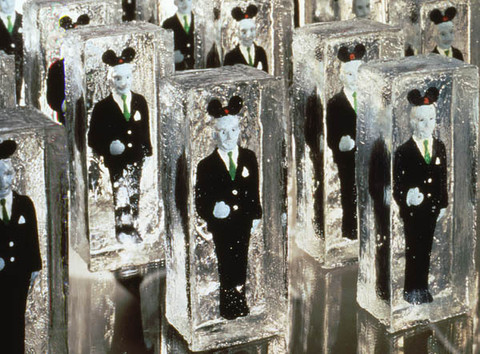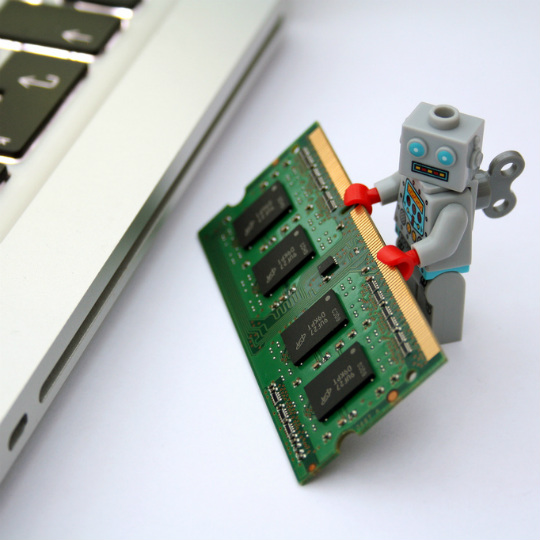The hissing of my fridge as it goes through its defrost cycle always makes me think something’s wrong. I imagine my leftover takeaway in there, spluttering softly to itself, maybe dripping a little.
I know this is just a cycle it’s going through, but I can’t help worrying. I open it and suddenly there is steam, and the moment before the light goes on it looks like something from the Mesozoic era. But this may have more to do with how often I clean out my fridge.
I rearrange the head of lettuce around the head of Walt. Check his arms are resting nicely on the rack of lamb I got on special but is too big for me to eat myself. He sits there, impassive, unmoved by my ministrations. I’m careful not to shift him too much, but even through glancing touches he feels heavy. I guess this is another side effect of the ‘vitrification’ process, where they replaced the water in Walt’s body with glycol-based antifreeze. I tentatively pat him to make sure he’s stable. It took two special removalist men to get him in there; I don’t want him falling out. Especially because of how bad that would make me look in the eyes of the program.
I’m part of the NCA Institute’s Takehome Program. It’s almost like rehabilitation, but for those who aren’t really offenders, and who aren’t really alive. Instead it’s a community response to the growing decline of the cryogenic industry and the desperate need for ‘rehousing’.
Obviously this is unconventional, but when faced with the prospect of shutting down, there were few alternatives. The millions poured into cryogenics had slowly leaked out again, and so it was up to us, the community, to step in and help realise our dreams of seeing our beloved millionaires cared for and safely reheated when the time came.
The above scenario isn’t quite the truth. I probably wouldn’t be trusted to train a guide dog, let alone freeze someone ‘for the community’. Among the many reasons this project sadly is not feasible is that my second-hand fridge with its stale pizza menus and leaky photographs isn’t powered by liquid nitrogen nor kept at -202°C. But the failure of cryogenics itself is possible. And indeed has already happened before.
I rearrange the head of lettuce around the head of Walt. Check his arms are resting nicely on the rack of lamb I got on special but is too big for me to eat myself.
Bankruptcy has impacted the cryogenics movement in the past, and while you might think these places wouldn’t have trouble staying solvent, it’s something that could happen again.
The first recorded incident of someone being medially frozen with the intent to eventually bring them back to life was in 1967. The stiff was Dr. James Bedford, a 73-year-old psychology professor, just three years after a writer named Evan Cooper founded the Life Extension Society. It took another five years before the first thaw came to light.
When relatives stopped paying funds in 1973, Robert Nelson, the head of Cryonics Society of California, claimed he tried to maintain the society’s nine frozen clients at his own personal expense. Sadly, after a year he was unable to do so. The bodies were given back to relatives where possible, but some were simply thawed at the Chatsworth site (which press would later describe as a ‘crypt’, the smell of which “spins the stomach into a thousand dizzying somersaults”. There was a media frenzy, and a million-dollar lawsuit, with Nelson even accused of being a mass murderer (despite the fact that his victims were already dead). Once the dry ice had cleared, the Chatsworth site was seen as the first major failing of the cryogenics movement.

There are other less high-profile cases, where, due to lack of funds, preparation or knowledge, human beings were made to resemble what happens when you leave ice cream out of the fridge. The chilling fact is that of the seventeen documented early cryonics cases, only James Bedford remains preserved today.
It seems obvious that cryogenics, just like anything else, can experience financial trouble, but it’s more shocking when those affected are human beings – albeit dead ones right now. The prospective bodies who looked into it with heavy pockets and lighthearted hopes saw all the costs, risks and benefits, but I doubt they saw the possibility of economic crises disturbing their slumber.
Although you can be preserved as a Futurama-like head-in-a-jar for just US$10,000, usually the cost is about US$250,000 for whole body preservation. Having the standby team ready to preserve you, and enough liquid nitrogen for the rest of your afterlife, are both additional expenses. While this money is invested, with life insurance often used to fund it, there’s always the chance of another great recession, consumer doubt, or the collapse of currency and everyone turning to bitcoin.
It’s a shame too, because despite advances in technology that are being made each day, supporters of cryogenics admit that there are still no signs for revival being possible in the visible future. In fact, one interesting calculation puts the combined probability of failure at 99.82 percent.
The questions that still remain today include whether it is likely that more cryogenics companies could fail and what the consequences of this will be; whether cryogenics will ever become a blossoming industry and how this will impact on the future; and lastly why anyone would bother freezing their pets.
Rafael S. W. is a recent graduate of creative writing and one of the founding members of Dead Poets’ Fight Club. He has been published in Voiceworks, Going Down Swinging and Dot Dot Dash. He also competes in poetry slams and giant-sized chess games.





